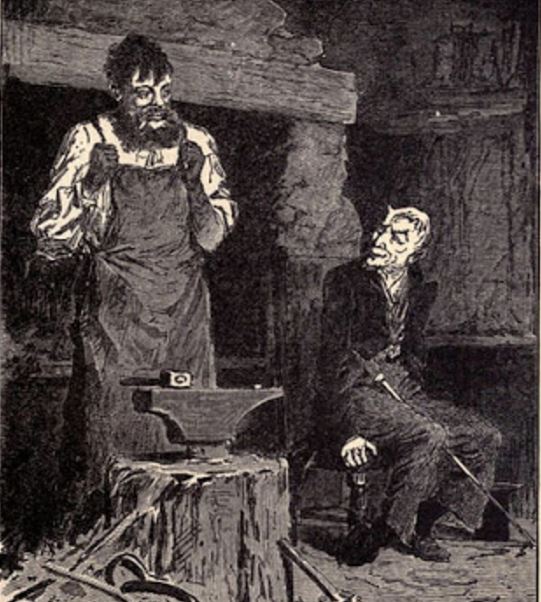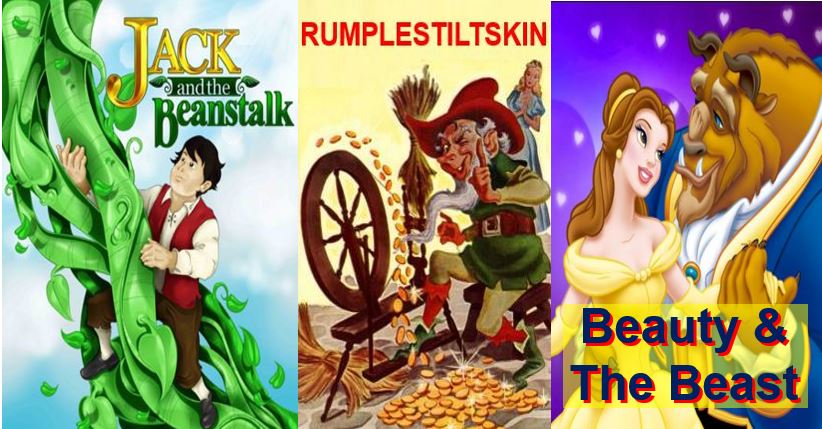The fairy tales we tell our kids today predate the Bible, Roman and Greek mythology, as well as all modern European languages, say researchers from Durham University in England and the New University of Lisbon (Universidade Nova de Lisboa) in Portugal. Over seventy fairy tales are probably between 4,000 and 6,000 years old.
Sara Graça da Silva (Lisbon) and Jamshid J. Tehrani (Durham) wrote about their study and findings in the academic journal Royal Society Open Science. They believe that popular folktales had an influence on the writings of Roman and Greek mythology, the Bible and several other religious literature.
Their conclusions clash with some scholars who say that our most popular fairy tales originated much more recently.
 The ‘Smith and the Devil’ tale, commonly told to children in Russia, is one of the oldest folktales. Its origins date back to 4,000 to 6,000 years ago. (Image: thebookshelf)
The ‘Smith and the Devil’ tale, commonly told to children in Russia, is one of the oldest folktales. Its origins date back to 4,000 to 6,000 years ago. (Image: thebookshelf)
Many tales first told in extinct ancestral languages
In an interview with Discovery News, Dr. Jamie Tehrani, Senior Lecturer at Durham University’s Department of Anthropology, said versions of ‘Beauty and the Beast’, ‘Jack and the Beanstalk’ and ‘Rumplestiltskin’ are likely to have been around before most European languages were born.
He believes they were first told in ancestral languages – ones that European languages evolved from – that no longer exist.
Dr. Tehrani said:
“It is difficult to put precise dates on such things, but we’re looking in the region of 4,000 to 6,000 years old.”
Dr. Tehrani and Dr. Sara Graça da Silva, Postdoctoral Researcher at the Institute for Studies of Traditional Literature, Faculty of Human and Social Sciences, New University of Lisbon, examined 275 Indo-European fairy tales to determine whether they were more likely to be shared by closely related communities compared to distantly-related ones.
Geographical proximity versus languages with common roots
They tried to establish whether one can predict how frequently fairy tales are shared depending on how geographically close populations are to each, or how related their languages are.
 These fairy tales were probably being told to children before the Bible was written or anybody started speaking Greek or Latin.
These fairy tales were probably being told to children before the Bible was written or anybody started speaking Greek or Latin.
This allowed them to separate the effects of folktales making their way into neighboring towns – through migrations or trade – from those that had originated from the ancestral language of related modern languages.
They identified seventy-six folktales that appear to have come from a common ancestral language.
The seventy-six tales were then mapped on a ‘family tree’ of Indo-European languages to determine how far back they could be traced. They applied comparative phylogenetic methods – techniques used by biologists to reconstruct the evolution of genetically-inherited features.
According to EMBL-EBI, Wellcome Trust Genome Campus, phylogenetics is:
“Phylogenetics is the study of evolutionary relationships among biological entities – often species, individuals or genes (which may be referred to as taxa ).”
The Smith and the Devil – a super-ancient folktale
One of the most ancient tales of the seventy-six was The Smith and the Devil (A Dialogue between Joseph Smith and the Devil) – in which Joseph, a blacksmith, sells his soul to an evil spirit (devil) in return for the power to be able to weld any materials together. He then uses that power to attach the evil spirit to a tree or stool, and says it will only be freed if he can keep his soul.
Dr. Terhrani says the tale can be traced back to the Bronze Age ancestral languages of the Indo-European language family.
In an Abstract in the journal, the authors wrote:
“On a broader level, the kinds of stories told in ancestral societies can provide important insights into their culture, furnishing new perspectives on linguistic, genetic and archaeological reconstructions of human prehistory.”
Citation: “Comparative phylogenetic analyses uncover the ancient roots of Indo-European folktales,” Sara Graça da Silva and Jamshid J. Tehrani. Royal Society Open Science. Published 14 January 2016.DOI: 10.1098/rsos.150645.
